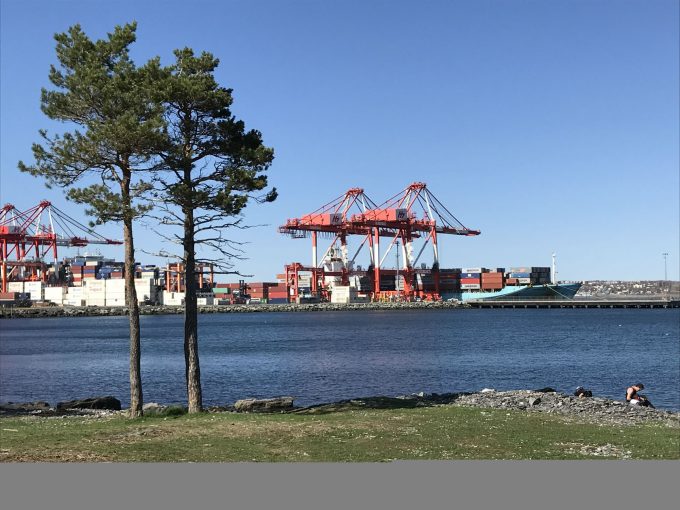Trump tariff threat and China downturn will make CNY 2025 'different'
The impact of Chinese New Year (CNY) on global supply chains “cannot be overstated”, according ...
GM: RAISING THE ROOF GGM: IN FULL THROTTLE GZIM: MAERSK BOOST KNIN: READ-ACROSSMAERSK: NOT ENOUGHMAERSK: GUIDANCE UPGRADEZIM: ROLLERCOASTERCAT: HEAVY DUTYMAERSK: CATCHING UP PG: DESTOCKING PATTERNSPG: HEALTH CHECKWTC: THE FALLGXO: DEFENSIVE FWRD: RALLYING ON TAKEOVER TALKODFL: STEADY YIELDVW: NEW MODEL NEEDEDWTC: TAKING PROFIT
GM: RAISING THE ROOF GGM: IN FULL THROTTLE GZIM: MAERSK BOOST KNIN: READ-ACROSSMAERSK: NOT ENOUGHMAERSK: GUIDANCE UPGRADEZIM: ROLLERCOASTERCAT: HEAVY DUTYMAERSK: CATCHING UP PG: DESTOCKING PATTERNSPG: HEALTH CHECKWTC: THE FALLGXO: DEFENSIVE FWRD: RALLYING ON TAKEOVER TALKODFL: STEADY YIELDVW: NEW MODEL NEEDEDWTC: TAKING PROFIT

Soaring fuel costs combined with stagnant or under-pressure freight rates are forcing container shipping lines to axe services on marginal tradelanes.
The latest route under scrutiny is the traditionally robust transatlantic, which in the past week has seen both Hyundai Merchant Marine (HMM) and Evergreen announce the suspension of services.
HMM is giving up its 700 teu a week allocation on the 2M’s two strings from North Europe to the US east coast and US Gulf, telling shippers that after June it would “no longer serve the transatlantic until further notice”.
The South Korean carrier added: “Market conditions drive HMM to concentrate our efforts to service our customers in other core trades.”
This represents a setback for HMM’s aspirations of becoming a global carrier, but according to one source it was not filling the slot allocation, which it had to pay for regardless, and the final straw was the imposition of the emergency bunker surcharge levied by MSC and Maersk.
And next month will see Evergreen pull its TAX North Europe-US east coast and Gulf shuttle, which only launched last month.
The Taiwanese carrier did not give an official reason for the suspension, but unlike HMM, Evergreen also operates two other services on the transatlantic, the TAE (transatlantic express) and the EUG (Europe to Gulf of Mexico express).
Carriers have failed to lift rates on the transatlantic and, according to Drewry’s World Container Index (WCI), spot rates between Rotterdam and New York have remained unchanged for several weeks at $1,918 per 40ft.
Although the WCI is recording a year-on-year increase of 10% on the spots, this is still insufficient to compensate for the 20% hike and rising cost of bunker fuel. Generally, with fuel hedging strategies, carriers have an eight-week grace period on bunker cost increases, which contrasts with the average of two quarters before bunker surcharges, if implemented, are seen in carriers’ revenues.
Moreover, carriers are facing numerous other inflationary pressures, such as rocketing charter hire rates, big hikes in intermodal costs and a weaker US dollar, which is the bedrock of liner revenue.
Indeed, Maersk reacted to its “unsatisfactory” first-quarter $239m loss by announcing “a number of short-term initiatives” to improve profitability.
Nevertheless, the Danish carrier is still on the lookout for trades where it can earn some money, evidenced by last week’s decision to commence its own Mediterranean to St Lawrence Seaway service in July, after previously slot chartering on a Hapag-Lloyd loop. The weekly Med/Montreal Express service will be a five-vessel rotation stopping in Salerno and La Spezia (Italy), Fos-sur-Mer (France), Algeciras (Spain), Montreal and Halifax (Canada) and Valencia (Spain).
The line said other Mediterranean ports would be connected through its “integrated transhipment services in Algeciras and Valencia, with consistent products to/from the Middle East, Africa, and Asia”.
Karsten Kildahl, chief executive of Maersk Line’s European Region, said: “We are confident we can create opportunities for European and Canadian businesses which will offer them improved transportation solutions to cater for the demands of growing trade.”
Comment on this article